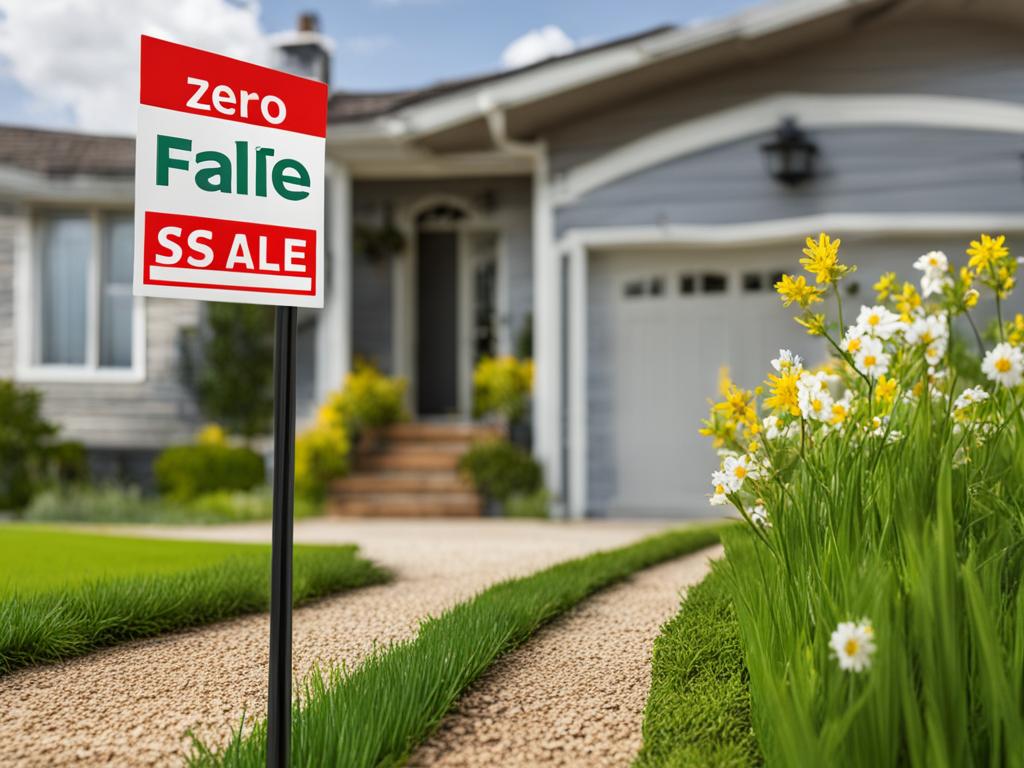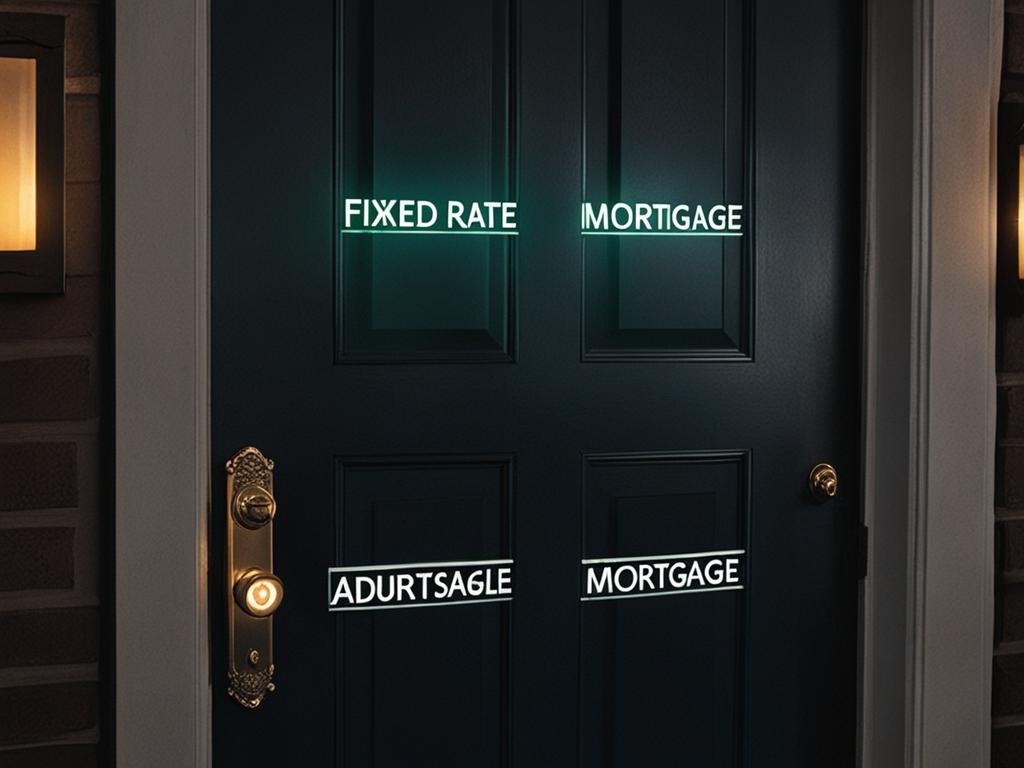Package Mortgage Explained – Home Loan Solutions
A package mortgage is a type of real estate loan that combines the financing for both the property and the additional personal property items found on it. It is commonly used for fully furnished condominiums, apartments, and even commercial properties like restaurants. With a package mortgage, borrowers can enjoy the convenience of financing both the real estate and the associated items in one loan.
When considering a home loan, it’s important to understand the different types and rates available. A fixed-rate mortgage offers stability with a consistent interest rate throughout the life of the loan, resulting in predictable monthly mortgage payments. Alternatively, an adjustable-rate mortgage (ARM) has an interest rate that can fluctuate over time based on market conditions. It’s crucial to weigh the pros and cons of each type when choosing a package mortgage that best suits your needs.
In addition to package mortgages, there are various other mortgage loan types to explore. Conventional mortgages, such as conforming or nonconforming loans, are not government-backed. Jumbo loans are designed for more expensive properties. Government-insured loans, like FHA, USDA, and VA loans, help certain borrowers achieve homeownership. Other options include interest-only mortgages, construction loan mortgages, piggyback loans, and balloon mortgages. Understanding the features and benefits of each can help you make an informed decision.
Key Takeaways:
- Package mortgages combine financing for both the real estate and additional property items.
- Fixed-rate mortgages offer stability with a consistent interest rate, while adjustable-rate mortgages have variable rates.
- Other mortgage loan types include conventional, jumbo, government-insured, interest-only, construction, piggyback, and balloon mortgages.
- Bank of America offers the Community Affordable Loan Solution, a program that allows first-time homebuyers to purchase a home with no down payment, no mortgage insurance, and zero closing costs.
- Low down payment options like those provided by Bank of America, Navy Federal Credit Union, Chase Bank, and PNC Bank can make homeownership more accessible.
Understanding Mortgage Loan Types and Rates
When it comes to mortgage loans, understanding the different types of rates is crucial for homebuyers. Two significant rate options are the fixed-rate mortgage and the adjustable-rate mortgage (ARM). Let’s take a closer look at each:
Fixed-Rate Mortgage
A fixed-rate mortgage offers stability and predictability in monthly mortgage payments. With this type of loan, the interest rate remains the same throughout the loan term. Whether it’s a 15-year or 30-year mortgage, your monthly payments will stay consistent, making it easier to budget and plan for the future. This type of mortgage is particularly beneficial in a low-interest rate environment, as it allows you to lock in a favorable rate for the duration of your loan.
Adjustable-Rate Mortgage (ARM)
An adjustable-rate mortgage (ARM) comes with an interest rate that can fluctuate over time. The rate is typically fixed for an initial period, commonly 3, 5, 7, or 10 years, and then adjusts periodically based on changes in the market. The adjustment is usually determined by adding an agreed-upon margin to a specific benchmark rate, such as the U.S. Treasury rate or the London Interbank Offered Rate (LIBOR). While an ARM might offer a lower initial interest rate compared to a fixed-rate mortgage, it bears more uncertainty as rates can rise or fall in the future.
Homebuyers considering a package mortgage should carefully evaluate the pros and cons of each rate type. A fixed-rate mortgage provides stability and peace of mind, while an adjustable-rate mortgage offers the potential for lower initial payments but with the risk of rate fluctuations down the line. Assess your financial goals and tolerance for risk to determine which option is best suited to your needs.
As a visual aid, here’s a comparison between a fixed-rate mortgage and an adjustable-rate mortgage:
| Fixed-Rate Mortgage | Adjustable-Rate Mortgage (ARM) |
|---|---|
| Interest rate remains the same for the entire loan term | Interest rate may change after an initial fixed period |
| Monthly payments are consistent and predictable | Monthly payments may vary depending on rate adjustments |
| Provides stability and peace of mind | Can offer lower initial payments, but with potential future rate changes |
Exploring Different Mortgage Loan Types
When it comes to buying a home, there are several types of mortgage loans available to suit different needs and financial situations. Understanding these loan types can help you make an informed decision and choose the right mortgage for your homebuying journey. Let’s explore some of the most common mortgage loan types:
1. Conventional Mortgage
A conventional mortgage is not insured or guaranteed by the government. It can be conforming, which means it meets the loan limits set by Fannie Mae and Freddie Mac, or nonconforming for loans that exceed those limits. Conventional mortgages often require a higher credit score and down payment compared to government-backed loans.
2. Jumbo Loan
A jumbo loan is designed for individuals looking to purchase a more expensive property. These loans exceed the conforming loan limits set by Fannie Mae and Freddie Mac. Jumbo loans typically have stricter qualification requirements in terms of credit score, income, and down payment.
3. Government-Insured Loan
Government-insured loans are backed by government organizations such as the Federal Housing Administration (FHA), the U.S. Department of Agriculture (USDA), or the Department of Veterans Affairs (VA). These loans are designed to make homeownership more accessible for certain borrowers who may have lower credit scores or less money for a down payment. Some examples of government-insured loans include FHA loans, USDA loans, and VA loans.
4. Interest Only Mortgage
With an interest-only mortgage, borrowers have the option to pay only the interest on the loan for a set period, usually between 5 and 10 years. This can result in lower monthly payments during the interest-only period. However, once the interest-only period ends, borrowers will need to start paying both the principal and interest, which could lead to higher monthly payments.
5. Construction Loan Mortgage
A construction loan mortgage is specifically designed for individuals who want to build a new home. These loans provide financing for the construction phase of the home and can later be converted into a traditional mortgage once the construction is complete.
6. Piggyback Loan Mortgage
A piggyback loan mortgage involves taking out two loans simultaneously. The first loan covers 80% of the home’s purchase price, the second loan covers the remaining 20%, and the borrower provides no down payment. This type of loan can help avoid private mortgage insurance (PMI) and may be a suitable option for those who don’t have a large down payment.
7. Balloon Mortgage Loan
A balloon mortgage loan offers lower initial monthly payments and a large payment, known as a balloon payment, at the end of the loan term. This type of loan is typically short-term, with terms ranging from 5 to 7 years. Borrowers often use balloon mortgages when they plan to sell or refinance the property before the balloon payment is due.
Each mortgage loan type has its own benefits and considerations. It’s crucial to carefully evaluate your financial situation, long-term goals, and eligibility criteria before making a decision. Working with a knowledgeable mortgage professional can help you navigate the options and find the right mortgage loan type for your needs.

| Loan Type | Key Features |
|---|---|
| Conventional Mortgage | Not backed by the government; can be conforming or nonconforming |
| Jumbo Loan | Designed for expensive properties; exceeds conforming loan limits |
| Government-Insured Loan | Backed by government organizations like FHA, USDA, or VA |
| Interest Only Mortgage | Option to pay only the interest for a set period |
| Construction Loan Mortgage | Financing for building a new home |
| Piggyback Loan Mortgage | Two loans taken out simultaneously to avoid PMI |
| Balloon Mortgage Loan | Lower initial payments with a large payment due at the end of the term |
Bank of America’s Community Affordable Loan Solution
Bank of America offers a new mortgage product designed to make homeownership more accessible for first-time buyers. Known as the Community Affordable Loan Solution, this innovative program provides an opportunity to purchase a home with zero down payment, no mortgage insurance, and zero closing costs.
The Community Affordable Loan Solution aims to bridge the homeownership gap, particularly in predominantly Black and Hispanic neighborhoods. By eliminating the barriers of a down payment and mortgage insurance, Bank of America aims to empower more individuals and families to achieve their dream of owning a home.
Eligibility for the Community Affordable Loan Solution is based on income and location. Applicants must also complete a homebuyer certification course to ensure they have the knowledge and understanding to successfully navigate the mortgage process.
Note: The image above represents the Bank of America Community Affordable Loan Solution.
Pros and Cons of a Zero-Down Mortgage
While a zero down payment mortgage can lower the barrier to homeownership, it’s important to consider the pros and cons.
On the positive side, it eliminates the need to save for a down payment and allows borrowers to allocate their savings towards other expenses. This can be particularly beneficial for first-time homebuyers who may struggle to accumulate a large sum of money for a down payment.
However, there are some negative aspects to consider. With a zero down payment mortgage, the loan covers the entire value of the property, which means that the monthly mortgage payments may be higher compared to a mortgage with a down payment. This can impact the overall affordability of the loan and the borrower’s monthly budget.
It’s important for prospective homebuyers to work closely with a financial planner or a mortgage lender to understand the implications of a zero down payment mortgage. They can help determine if the monthly mortgage payments will fit within the borrower’s budget and provide guidance on mortgage affordability.
If you’re considering a zero down payment mortgage, carefully evaluate your financial situation and long-term goals. Assess your ability to comfortably manage the monthly mortgage payments and ensure that you have a contingency plan for unexpected expenses or changes in your financial circumstances.

Note: The image above represents the concept of a zero down payment mortgage and is for illustrative purposes only. It does not depict specific loan terms or rates.
Pros and Cons of a Zero-Down Mortgage – Overview
| Pros | Cons |
|---|---|
| Eliminates the need to save for a down payment | Higher monthly mortgage payments |
| Allows borrowers to allocate savings towards other expenses | Impacts overall affordability of the loan |
| May require a contingency plan for unexpected expenses |
Keep in mind that there are other low down payment mortgage options available if a zero down payment mortgage doesn’t align with your financial goals. It’s important to evaluate all available options and choose the one that best suits your needs and circumstances.
Eligibility for Bank of America’s Loan Program
The eligibility requirements for Bank of America’s Community Affordable Loan Solution are designed to provide opportunities for a wide range of individuals. To qualify for this program, applicants must meet the following criteria:
- Income Requirements: The loan program considers the applicant’s income to ensure that they have the financial capabilities to repay the loan. Specific income thresholds may vary based on the location of the property.
- Credit Requirements: While Bank of America’s program does not require a minimum credit score, credit guidelines take into account factors such as timely rent and utility bill payments. This flexible approach allows individuals with limited credit history or previous credit challenges to still be considered for the loan.
- Completion of Homebuyer Certification Course: As part of the application process, applicants must successfully complete a homebuyer certification course. This course is provided by select Bank of America and HUD-approved housing counseling partners to ensure that borrowers are equipped with the necessary knowledge and skills to navigate the homebuying process.
“Bank of America’s Community Affordable Loan Solution aims to expand homeownership opportunities by considering a range of factors beyond credit scores. This approach helps individuals with diverse financial backgrounds and varying credit histories achieve their dream of homeownership.”
Eligibility Summary:
| Eligibility Criteria | Requirements |
|---|---|
| Income | Income thresholds based on property location |
| Credit | No minimum credit score requirement, but consider factors such as timely rent and utility bill payments |
| Homebuyer Certification Course | Successful completion of a course provided by Bank of America or HUD-approved housing counseling partners |
Other Low Down Payment Options
In addition to Bank of America’s program, there are other low down payment options available from different lenders. These options cater to a wide range of borrowers, including veterans, medical professionals, and those looking for affordable home loan solutions.
Navy Federal Credit Union – VA Home Loan
- Zero down payment mortgage option
- Available to current or retired members of the Armed Forces
- Flexible eligibility criteria
- Competitive interest rates
- No private mortgage insurance requirement
If you have served in the military, a VA home loan from Navy Federal Credit Union can provide you with a no down payment mortgage option, making homeownership more accessible.
Chase Bank – DreaMaker Home Loan
- Down payment options as low as 3%
- Flexible credit requirements
- Favorable interest rates
- Reduced mortgage insurance requirements
The DreaMaker home loan from Chase Bank offers low down payment options, making it easier for first-time homebuyers to enter the housing market.
PNC Bank – Specialized Loan Programs
- Special loan options for medical professionals
- USDA loans with no down payment requirement
- Competitive interest rates
- Flexible eligibility requirements
PNC Bank provides specialized loan programs for medical professionals, as well as USDA loans that traditionally offer no down payment requirement, helping borrowers achieve their homeownership goals.
These low down payment mortgage options allow borrowers to achieve their dreams of homeownership with minimal upfront costs. Whether you’re a veteran, a first-time homebuyer, or part of a specific professional group, there are mortgage solutions available to suit your needs.
If you’re considering a low down payment mortgage, it’s important to evaluate each option carefully, including interest rates, eligibility requirements, and mortgage insurance. Consult with mortgage professionals to find the best loan program that fits your financial situation.
Benefits of Low Down Payment Options
Low down payment options offer numerous benefits to homebuyers, including increased affordability and flexibility. By reducing the amount required for a down payment and closing costs, these options provide buyers with the opportunity to allocate their savings towards other essential expenses such as home repairs and emergency costs.
One of the significant advantages of low down payment options is their ability to make homeownership more accessible. By requiring a smaller upfront investment, these options enable more individuals and families to enter the housing market and achieve their dream of owning a home.
Moreover, with the savings generated from a lower down payment, homebuyers have the financial flexibility to address unforeseen circumstances, such as necessary home repairs or unexpected expenses. This added financial buffer can help homeowners manage any emergency situations that may arise after purchasing a home, providing peace of mind and financial security.
Overall, the affordability and flexibility offered by low down payment options empower homebuyers to make informed decisions based on their unique needs. By reducing the financial burden of a large down payment, individuals and families can focus on building a stable home and enjoying the benefits of homeownership.
Contact our team today to explore low down payment options that fit your financial goals and possibilities.

Considerations for Choosing a Mortgage Loan
When it comes to choosing a mortgage loan, there are several important factors to consider. By carefully evaluating your budget, long-term financial plans, and interest rates, you can make an informed decision that aligns with your needs and goals.
One of the first steps in the mortgage loan selection process is to assess your financial situation. Take an in-depth look at your income, expenses, and debt to determine how much you can comfortably afford to borrow. This will help you establish a realistic budget and narrow down your options.
Exploring different loan types is another crucial consideration. Each type of mortgage loan has its own set of features and benefits. For example, a fixed-rate mortgage offers stability with consistent monthly payments, while an adjustable-rate mortgage provides flexibility with rates that can change over time.

It’s important to understand the terms and conditions of each loan option. Look closely at factors such as loan duration, repayment terms, and any additional fees or costs associated with the loan.
Interest rates play a significant role in determining the overall cost of your mortgage loan. Research current interest rate trends and compare rates from different lenders to ensure you’re getting the best possible deal. Even a small difference in interest rates can have a significant impact on your monthly mortgage payments and the total amount you’ll pay over the life of the loan.
Working with a mortgage professional can provide valuable guidance and assistance throughout the process. They can help you navigate the complexities of mortgage loan selection, provide personalized advice based on your financial circumstances, and answer any questions you may have.
Key Takeaways:
- Assess your budget and long-term financial plans to determine how much you can afford to borrow.
- Explore different loan types and understand their features and benefits.
- Pay close attention to the terms and conditions of each loan option.
- Compare interest rates from different lenders to secure the best deal.
- Seek guidance from a mortgage professional to make an informed decision.
Resources and Support for Homebuyers
When embarking on the journey of buying a home, it’s essential to have access to resources and support to navigate the process effectively. Whether you’re a first-time homebuyer or looking to upgrade, there are various organizations and agencies that offer assistance programs, down payment grants, and financial education courses to help you achieve your homeownership goals.
Homebuyer Assistance Programs
Homebuyer assistance programs are designed to provide financial support and guidance to individuals or families looking to purchase their first home. These programs often include down payment assistance, closing cost assistance, and favorable loan terms. By partnering with reputable organizations, homebuyers can explore different programs and find options that align with their needs and budget.
Down Payment Grants
Down payment grants are a valuable resource for homebuyers who may struggle to save enough money for a down payment. These grants, provided by government agencies, nonprofits, or private organizations, can help reduce the upfront costs of purchasing a home. By securing a down payment grant, buyers can increase their purchasing power and make homeownership more attainable.
Financial Education
Financial education plays a crucial role in empowering homebuyers to make informed decisions throughout the homebuying process. Many organizations offer courses and workshops that cover topics such as budgeting, credit management, mortgage basics, and understanding loan terms. By participating in financial education programs, homebuyers can gain the knowledge and skills necessary to navigate the complexities of the real estate market.
“Financial education is the key to unlocking the door to successful homeownership. By understanding the financial aspects and responsibilities of owning a home, homebuyers can make sound decisions and secure their long-term financial well-being.”
Having access to these resources and support can significantly enhance your homebuying journey. By taking advantage of homebuyer assistance programs, down payment grants, and financial education courses, you can confidently move forward with your plans and make informed decisions that align with your financial goals.
Remember, the path to homeownership is unique for each individual, and it’s essential to explore the available resources and seek expert guidance to find the best options for your specific needs.
Conclusion
Understanding the various mortgage loan options is crucial for prospective homebuyers. Whether considering a package mortgage or exploring different loan types, it’s important to carefully evaluate each option to find the best fit for your financial situation and homeownership goals.
By conducting thorough research and considering factors such as interest rates, eligibility requirements, and down payment options, individuals can make informed decisions about their mortgage loans. It’s recommended to work with a mortgage professional who can provide guidance and assistance throughout the process.
Additionally, taking advantage of resources and support available to homebuyers can ease the journey towards homeownership. Accessing homebuyer assistance programs, financial education courses, and down payment grants can provide valuable information and financial assistance. These resources can empower individuals to make smart decisions and achieve their dream of owning a home.
FAQ
What is a package mortgage?
A package mortgage is a type of real estate loan that includes both the real estate and any additional personal property and furniture on the property.
What types of mortgage rates are available?
Mortgage loans can have fixed rates or adjustable rates. A fixed-rate mortgage has an interest rate that remains the same throughout the loan term, while an adjustable-rate mortgage (ARM) has an interest rate that can change over time.
What are the different types of mortgage loans?
There are several types of mortgage loans, including conventional mortgages, jumbo loans, government-insured loans (such as FHA, USDA, and VA loans), interest-only mortgages, construction loan mortgages, piggyback loans, and balloon mortgages.
What is Bank of America’s Community Affordable Loan Solution?
Bank of America’s Community Affordable Loan Solution is a mortgage program that allows first-time homebuyers to purchase a home with no down payment, no mortgage insurance, and zero closing costs.
What are the pros and cons of a zero-down mortgage?
The pros of a zero-down mortgage include eliminating the need to save for a down payment and having more savings for other expenses. However, the cons include higher monthly mortgage payments since the loan covers the entire value of the property.
How can I qualify for Bank of America’s loan program?
Eligibility for Bank of America’s loan program is based on income, location, and completion of a homebuyer certification course. Credit guidelines consider factors like timely rent and utility bill payments without requiring a minimum credit score.
What are some other low down payment options?
Other low down payment options include Navy Federal Credit Union’s VA home loan, Chase Bank’s DreaMaker home loan, and PNC Bank’s specialized loan options for medical professionals and USDA loans.
What are the benefits of low down payment options?
Low down payment options make homeownership more affordable and flexible by reducing the upfront costs. Buyers can allocate more savings towards home repairs or unexpected expenses.
What should I consider when choosing a mortgage loan?
When choosing a mortgage loan, consider your budget, long-term financial plans, and interest rates. Assess your financial situation, explore different loan types, and understand the terms and conditions of each option.
Are there resources and support available for homebuyers?
Yes, various organizations and agencies offer assistance programs, down payment grants, and financial education courses to support homebuyers throughout the process.
What should I know about package mortgages and mortgage loans?
Understanding package mortgages and different mortgage loan options is essential for homebuyers. Explore loan types, consider low down payment options, and take advantage of resources and support to make informed decisions and achieve homeownership goals.

